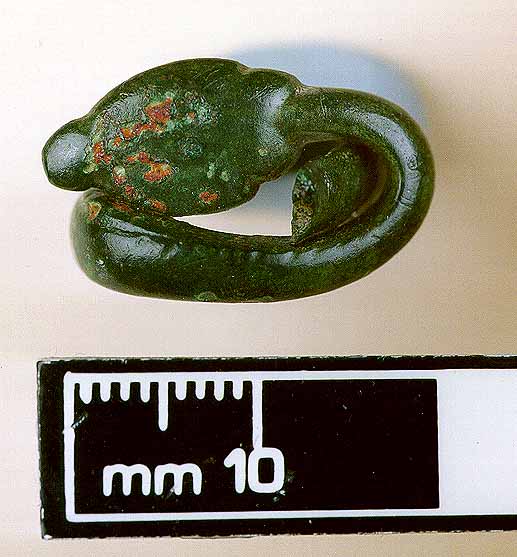|
|
Woman's Bronze Snake Ring from Barton Court Farm, Abingdon: 2nd century AD |

Roman rings often had great symbolic importance, even if they were not of precious materials, or particularly decorative or sentimental. Snake-shaped rings are found in Britain as in other parts of the Roman Empire. The snake was popular as an "apotropaic" symbol (warding off evil), as well as a symbol of immortality, rebirth and good health associated with the "chthonic" (earthy and subterranean) cults of Aesculapius, Minerva, Isis and Serapis. A bronze mould for making snake-rings and snake-bracelets was found at Alchester north of Oxford
The snake is curled so that its head rests under its tail; the head is flat, expanded and cobra-like with no markings for features. It was not found in a datable context at the villa at Barton Court Farm, which was occupied throughout the Roman period, but the naturalistic snake as a ring motif seems to have been more popular in the first half of the Roman period in Britain than in the second part.
It is thought to be a woman's ring both because of the relatively small size, and because of the more frequent association of decorative snake motifs with female costume in ancient times.
© 1998 Oxfordshire Museum Service, Setúbal Museums and the Benaki Museum